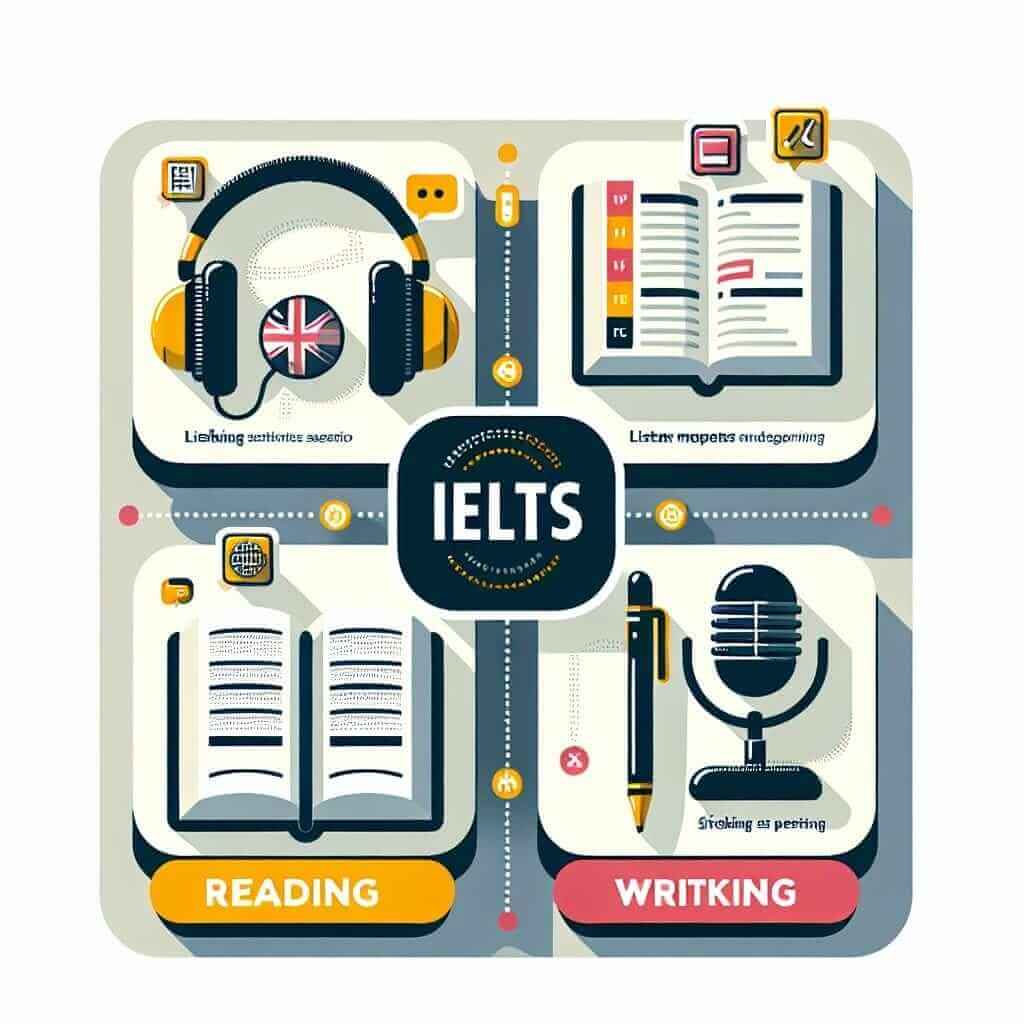The International English Language Testing System (IELTS) stands as a formidable obstacle for many non-native English speakers striving to achieve academic and professional goals. As an experienced IELTS instructor with over two decades of experience, I’ve had the privilege of guiding countless students toward success. In this comprehensive guide, we’ll delve into the intricacies of teaching an effective IELTS course, equipping both aspiring instructors and self-studying candidates with the tools they need to excel.
Understanding the IELTS Exam and its Challenges
Before embarking on the journey of teaching or taking the IELTS, it’s crucial to grasp the exam’s structure and the unique hurdles it presents.
The Four Pillars of IELTS
The IELTS exam assesses English language proficiency across four key areas:
- Listening: This section evaluates a candidate’s ability to comprehend spoken English in various accents and contexts.
- Reading: Candidates are tested on their reading comprehension skills, including their ability to identify main ideas, understand arguments, and interpret data.
- Writing: This section measures a candidate’s ability to express ideas clearly and coherently in written English, covering both academic and general writing tasks.
- Speaking: This face-to-face interview assesses a candidate’s fluency, pronunciation, grammar, and vocabulary in spoken English.
 IELTS Exam Format
IELTS Exam Format
Common Challenges Faced by IELTS Test Takers
Many test-takers encounter obstacles during their IELTS preparation, such as:
- Time management: The IELTS exam is strictly timed, requiring candidates to work efficiently and strategically allocate their time.
- Exam anxiety: The high stakes associated with the IELTS can lead to stress and anxiety, hindering performance.
- Lack of familiarity with the exam format: Understanding the nuances of each section and question type is essential for success.
- Difficulties with specific skills: Certain areas, such as writing cohesive essays or understanding complex listening passages, may pose particular challenges for learners.
Designing an Effective IELTS Course Curriculum
A well-structured course curriculum is the backbone of effective IELTS preparation.
1. Needs Analysis and Goal Setting
Begin by conducting a thorough needs analysis of your students. Identify their strengths, weaknesses, target scores, and learning styles. Collaboratively set realistic and achievable goals to provide clear direction for their learning journey.
2. Comprehensive Skill Development
Your curriculum should encompass all four IELTS skills, ensuring balanced and integrated learning:
- Listening: Introduce a variety of practice materials, including lectures, conversations, and news broadcasts. Focus on developing active listening skills, such as note-taking and identifying key information.
- Reading: Expose students to a diverse range of academic and general texts, including articles, essays, and reports. Teach effective reading strategies, such as skimming, scanning, and analyzing text structure.
- Writing: Provide ample opportunities for essay and report writing practice. Offer clear explanations of different essay types and teach essential grammar and vocabulary for academic writing.
- Speaking: Conduct regular speaking practice sessions using sample IELTS topics. Focus on improving fluency, pronunciation, and grammatical accuracy.
3. Exam Strategies and Techniques
Equip students with proven exam strategies and techniques:
- Time Management: Teach time-saving techniques for each section, such as skimming reading passages for keywords and planning essays effectively.
- Understanding Question Types: Familiarize students with the various question types encountered in each section, such as multiple choice, sentence completion, and short answer questions.
- Analyzing Sample Answers: Provide model answers for various question types, allowing students to analyze and emulate effective responses.
Engaging Teaching Methods for IELTS Preparation
Employing engaging teaching methods is crucial to keep students motivated and invested in their learning.
1. Interactive Activities and Games
Incorporate interactive activities and games to make learning enjoyable and effective. For example:
- Vocabulary Bingo: Enhance vocabulary acquisition through interactive games.
- Debate Clubs: Develop speaking and critical thinking skills through structured debates on relevant topics.
- Role-Playing: Simulate real-life scenarios from the speaking test, allowing students to practice their speaking skills in a comfortable environment.
2. Technology Integration
Leverage technology to create an immersive and effective learning experience:
- Online Practice Platforms: Utilize online platforms that offer interactive exercises, practice tests, and personalized feedback.
- Educational Videos and Podcasts: Supplement classroom learning with engaging videos and podcasts that reinforce key concepts and offer diverse accents.
- Collaborative Tools: Foster collaboration and peer learning through online forums and discussion boards.
Example: Incorporating Sample Test Questions
Integrating authentic IELTS practice materials is essential for familiarizing students with the exam format and level of difficulty. Here’s an example using a sample question from the IELTS Listening section:
Listening Section 2: Map Completion
(Audio plays a description of a museum layout)
Label the map below.
(Map provided with blank spaces for key locations within the museum)
This type of question assesses a candidate’s ability to understand directions, prepositions, and descriptions related to spatial organization.
Teaching Strategies:
- Pre-listening: Brainstorm vocabulary related to museums and spatial orientation (e.g., exhibit, gallery, opposite, adjacent).
- While-listening: Encourage active listening by asking students to note down key landmarks and directions.
- Post-listening: Review the answers as a class, addressing any challenges and highlighting successful strategies.
Conclusion
Teaching an effective IELTS course demands a deep understanding of the exam, carefully crafted curriculum, and engaging teaching methodologies. By providing comprehensive skill development, equipping students with proven strategies, and fostering a supportive learning environment, you can empower your students to approach the IELTS with confidence and achieve their desired results. As an experienced IELTS instructor, I can attest that the journey to IELTS success is both challenging and rewarding, and the right guidance can make all the difference.


